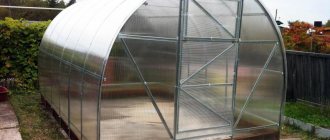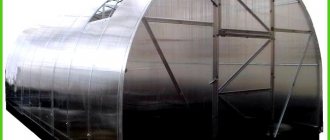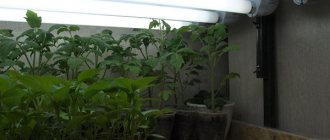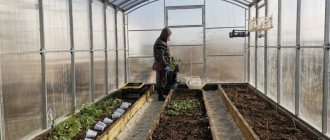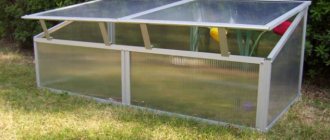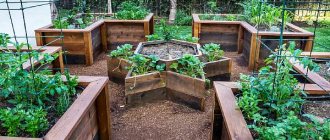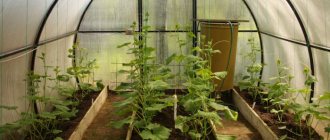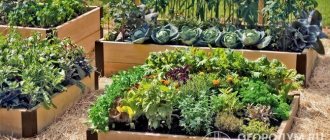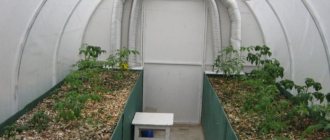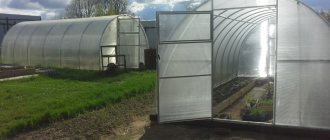People have been thinking about vertical gardening and growing plants for a very long time: for example, the famous Hanging Gardens of Babylon, built by the Babylonians around 600-500 BC, one of the Seven Wonders of the World. It was a multi-level cascade of trees, bushes, flowers, grape vines, the whole ensemble seemed like a huge green mountain.
Today, the principle of vertical gardening is used not so much for beauty, but to save space, reduce material costs when growing greens, vegetables and berries, as well as to obtain environmentally friendly products.
What are vertical farms and how do they work?
The design of vertical farms is most reminiscent of multi-tiered greenhouses: several levels of planting surface are placed on top of each other. This direction of plant growing is distinguished by a special approach to the use of space: multi-level plantings can be placed in the basement, on the balcony, and in an abandoned part of an industrial building. The idea of intensive use of limited space for agricultural purposes belongs to the American ecologist Dixon Dispommier, who first proposed “mass cultivation of plants in skyscrapers for commercial purposes.”
Vertical farms allow you to harvest a large crop from a minimum space. In addition, the main processes of the system’s functioning are automated, which means they do not require constant human participation: labor costs are also minimal.
The main task is to provide high-quality lighting to each of the levels, as well as to properly organize the principle of feeding and watering the plants. The latter task is best handled by hydroponics: instead of soil, plant roots are surrounded by a nutrient solution or substrate, watering and air humidity are automatically regulated. In addition, the hydroponic method of growing plants allows you to forget about fighting weeds and pests.
Foreign experience and construction successes
In one of the foreign companies, vertical urban farms based on aeroponics are successfully used and produce a yield that is 390 times higher than that obtained from traditional agriculture! On farms of this type, crops are harvested up to 30 times a year. Experience and technological solutions can and should be implemented in Russia.
Vertical farms allow you to grow 250 types of plants. Facilities consume 95% less water compared to traditional crop production and 40% less than using hydroponics. Plants receive water, oxygen and nutrition from the fog. The entire system is controlled remotely from a computer. Artificial intelligence collects analytics, produces a forecast on yields and ways to reduce risks.
What is vertical hydroponics
A vertical farm is an opportunity to significantly save on renting space while maintaining the same volume of harvest. Such structures make it possible not only to harvest crops all year round, but also to provide the most remote areas with fresh vegetables, fruits and herbs. The use of hydroponics is an opportunity to artificially create optimal conditions for plants to grow and develop.
With a multi-tier arrangement of trays with plants, each fruit or vegetable is provided with equally favorable conditions for ripening. In addition, this principle of organizing space provides free access to seedlings. By choosing small crops for cultivation, you can significantly increase the number of “floors”.
Principle of operation
The growth of agricultural crops is the observance of several conditions: provision of the root system with nutrients, high-quality and sufficient lighting, as well as the necessary microclimate. Hydroponic growing technology involves saturating the roots with liquid with nutrients dissolved in it. The main disadvantage of hydroponics is a possible lack of oxygen, which can lead to the death of seedlings.
The aeroponic method is based on the process of periodically irrigating plant roots with a nutrient solution supplied under high pressure. The disadvantage of technology is the need for constant technological maintenance and ensuring trouble-free operation.
The most modern vertical hydroponics uses a combination of hydroponic and aeroponic methods, as this increases the efficiency of the plant by at least 20%.
Another important issue is the quality of lighting for vertical farms: sodium gas-discharge lamps used in large greenhouse farms are not suitable here. Firstly, due to excess energy consumption, and secondly, excess heat generation, which will simply burn the plants. Automated farms typically use custom-designed LED lamps.
To ensure ventilation of the system, two methods are used:
- temperature reduction/increase circuits;
- removal of cold and warm air masses through ventilation channels.
The second method is more economical and reliable because it does not require maintenance.
Vertical farms - a technological breakthrough in agronomy
There are already several large companies, such as AeroFarms, Urban Crop Solutions, AgroTechFarm, Plenty, Freight Farms.
In 2022, the vertical farming market reached $2.3 billion. And according to Research And Markets, the global vertical farming market will grow to $7.4 billion by 2023.
Such growth rates are explained by the fact that this technology can be introduced into almost any area of life: large industry, restaurant and hotel businesses, personal use in residential premises.
Automated farms solve two important problems:
- Logistics.
For a consumer living in a small Swedish village, it is difficult to deliver the same cucumbers. In this state, they can only be grown in greenhouses; the volumes of products produced are small. It is difficult to ensure delivery of cucumbers; they may arrive already spoiled. In this case, the best option would be to install one small automated farm in the village. The farm will produce over a ton of cucumbers per month, but tomatoes, beets and carrots can also be grown.
If you use the device in the restaurant business, you can provide your customers with dishes made from the freshest ingredients. For example, a salad will be prepared from freshly grown tomatoes, cucumbers, and onions, which will have a positive effect on the taste.
- Product quality.
When growing vegetables or fruits using a soil surface, there is a risk of the plant acquiring any diseases or the spread of pathogenic flora, which will lead to the death of the crop.
Automated farms can reduce the defect rate to a minimum. Smart farms use soilless methods to grow plants.
Principle of operation
In order for economic crops to grow, it is necessary to create favorable conditions: ensure the supply of building substances to the root of the plant, provide good lighting to support the process of photosynthesis, and adjust the ventilation of the entire system for the optimal occurrence of many other processes.
Hydroponic or aeroponic methods are used for cultivation.
- The hydroponic method is the supply of liquid with nutrients to the root system of the plant. This method guarantees the saturation of the root area with all the necessary building elements and more intensive growth compared to the soil method.
The main problem of the hydroponic method is that the solution is practically not saturated with natural oxygen, which is why pathogenic flora can develop, which leads to the death of the plant.
- The aeroponic method is the process of periodically spraying a nutrient solution. This method ensures a high degree of oxygenation of the nutrient medium due to the supply of solution under high pressure.
The weakness of this principle is that such a system requires regular maintenance.
Experts from AgroTechFarm have come to the conclusion that the best efficiency and safety of plants can be achieved by combining two growing methods.
Lighting is one of the main factors for plant cultivation. Sodium gas-discharge lamps are installed in greenhouses, but they are suitable only for large greenhouse farms and industrial agricultural complexes, because they have high energy consumption and heat generation, which can harm the plant. Companies that create automated farms use LED lamps for lighting, usually developed using a special technology (it’s different for everyone).
Ventilation is carried out using air conditioning systems or temperature decrease and increase circuits. The second method is that cold or warm air masses are removed from the storage through a special valve. This method is cheaper than the first, and also more reliable; it eliminates the procedure for servicing the air conditioning system.
Truss comparison
There are several companies that make vertical farms, each using hydroponics and aeroponics in their own way. Each company occupies a certain category of the market: some produce farms for industrial scale, some for public enterprises, and some for the average consumer. Some companies take over all categories at once.
AeroFarms
AeroFarms appeared in 2004 and became one of the first companies on the market.
They have already created four complexes in Newark, which house automated farms. The total area of these farms is 9806 square meters. meters, they built the largest vertical farm in the world. AeroFarm grows various crops in its complexes for further sale.
The system is based on the principle of aeroponics, which allows for the production of large volumes of products with minimal water costs. Like all other companies, it uses LEDs to ensure photosynthesis occurs properly.
Urban Crop Solutions
Automated farms from this manufacturer use the hydroponics method, which is inferior to aeroponics in terms of yield and water consumption, but aeroponics is less reliable due to wear and tear on the spraying mechanism. The company allows you to control the crop growth cycle using your phone when connected to the Internet.
Urban Crop Solutions produces both mobile farms (28.2 square meters) and industrial farms (up to 5416 square meters).
The younger model is a standard forty-foot container where a person can be and where plants are cultivated. Growing area - 50 sq. meters.
The older model is a real robotic factory for growing crops. The building can contain 24 levels, that is, a farm with an area of 5416 square meters. meters can have 130,000 sq. meter area for growing.
AgroTechFarm
The company develops farms for the restaurant and hotel businesses, as well as for small businesses. AgroTechFarm combines hydroponics and aeroponics methods, which gives the best efficiency among all other automated farms.
The mobile model is 50 sq. meters. If we take strawberries as an example, such a farm can produce a yield of 300 kilograms per month.
The company is ready to install a farm with an area of up to 2000 square meters. meters. Such a structure will allow us to produce about 20 tons of strawberries every month. The farm from AgroTechFarm allows you to increase productivity by 10 times from 1 sq. meters compared to the soil method of cultivation.
Also, unlike other manufacturers, they ventilate the air using a temperature circuit rather than air conditioning, which makes their products more reliable.
Plenty
Farms from this manufacturer made a splash in 2022, when they attracted $200 million in investments from major market players: Eric Schmidt, Jeff Bezos, Jeffrey Housenbold. This is the most successful agricultural startup in terms of the number of investments raised.
Plenty develops urban farms that grow a variety of herbs and greens. To do this they use hydroponics. They cultivate plants on a six-meter wall, which allows them to grow large volumes of plants in a small area. Their farm can grow 350 times more greens than a soil farm of the same area, using 100 times less water. The company uses ladybugs to eliminate pests.
These farms grow highly perishable herbs and greens. The company built its facilities in several US cities: San Francisco to trade in the local market and Kent to sell its products in Seattle and Vancouver.
Plenty's selection includes basil, chives, red lettuce, sorrel and Siberian cabbage.
Freight Farms
In 2011, the company successfully completed fundraising on Kickstarter and began developing automated vertical farms that can be placed inside a classic forty-foot shipping container.
Their farms are bought all over the world. The creators were surprised that many orders come from small towns and villages, this is explained by the fact that vertical farms are many times more effective than the classic soil method of plant cultivation. Freight Farms uses hydroponics to grow crops. The company does not produce industrial farms.
Each vertical farm has its pros and cons:
- AeroFarms excels in efficiency because their farms use exclusively aeroponics, but at the same time, this solution makes the system unreliable and requires regular maintenance. Therefore, AgroTechFarm is the best option because they use both technologies, which are balanced to provide better reliability.
- Vertical farms are superior to the classic soil method of plant cultivation in all respects: water consumption, difficulty of maintenance, physical work. The main expense item is lighting with LED lamps.
Conclusion
Automated vertical farms are set to revolutionize the world of agriculture and this is not surprising, because advanced technologies of hydroponics and aeroponics bypass conventional seeding in everything. There are many companies creating farms the size of a classic shipping container. Such farms can be used by budding entrepreneurs for the restaurant business, because in this way it becomes possible to save on transporting plants and serve only fresh products.
Such farms struggle with the surprises that nature has in store for us (droughts, long winters, earthquakes). Now, even if there is no fertile land within a radius of hundreds of kilometers, people can grow fruits, vegetables and herbs that will be superior in quality to those cultivated on the lands intended for this.
Advantages and disadvantages of vertical farms
The traditional method of vegetable farming involved growing crops in fields. Modern hydroponic vertical farms have many advantages over many years of practice by farmers. These include:
- compactness of equipment: rented land can completely replace small areas of basements or warehouses;
- reduction of material costs: automation of equipment allows you to forget about finding and hiring labor, the costs of purchasing, leasing or repairing agricultural equipment;
- high yield due to nutrient substrate;
- environmental friendliness and attractiveness of grown plants regardless of climate and weather conditions;
- ease of use: all stages of growing and harvesting are more accurate due to the absence of soil;
- Availability: all specialized stores sell and deliver installations to any corner of Russia. The client can choose the model that suits him, the necessary parameters and system components;
- profitability: large volumes of harvest, which can be harvested up to 14 times a year.
The disadvantages of vertical hydroponic farms include finding a point of sale, minimizing intermediate storage as much as possible, and the need for initial investments in the purchase of expensive equipment. True, if the installation is used correctly, it pays for itself in a short time (up to 2.5 years).
Pros and cons of an innovative approach
The advantages of vertical home farms include:
- high yield per 1 sq. m compared to traditional greenhouses and farms;
- low water consumption;
- the ability to grow plants all year round;
- high environmental friendliness and energy efficiency due to water collection and purification, waste and carbon dioxide recycling, and electricity generation;
- the ability to assemble simple structures at home with your own hands and supplement them with modules as needed;
- eliminating crop failure due to drought or crop damage by pests.
Among the shortcomings are noted:
- high cost of building an industrial farm;
- difficulties with pollination due to controlled environments without insects;
- costs of attracting qualified employees;
- dependence on technology.
Use of vertical farms in different countries
USA
Americans are pioneers in the use of compact vertical farms: large cities are especially in need of fresh vegetables and herbs. Mobile New York farms are transport containers equipped with the most modern equipment: adjustable tiers of trays, LED lighting, ventilation systems, heating and automatic watering of plants (hydroponic or drip irrigation).
America's best-known vertical farms, FreshBox Farms and Newark, have the largest gross revenues, each with high yields, selling about 2 million pounds of fresh vegetables per year.
The startup Replantable solved the main problem of vertical farms - the need to purchase expensive equipment - by designing Nanofarm. The cost of a budget installation is less than $400. The device most closely resembles an incubator, which “hatches” vegetables and herbs instead of chickens. Having placed the seedlings sold as a set into the box, the owner of the installation only needs to set the growth mode and fill the tray with water. The ripening of vegetables will be indicated by a special light that comes on, and the harvest can be harvested. The boxes can be stacked on top of each other, thus creating a mini-farm. It’s difficult to reach sales points with such capacity, but it’s possible to feed a large family. Most importantly, the costs of material and labor resources are minimal here.
Finland
Engineers designed vertical farms in shipping containers, placing multi-tiered beds in a thirteen-meter module. You can harvest crops all year round anywhere in the city by connecting to water supply and electricity.
The price of a mobile cargo container is 100 thousand euros, but it can be rented. The manufacturer promises novice farmers a quick payback for the installation: up to 55 thousand bunches of lettuce grow annually on compact mobile beds.
The future of vertical farms
In 2022, vertical farms brought their owners more than $2 billion, and according to experts, this figure will only grow: by 2023, the global market for this sector will grow 3.5 times. This flourishing can be fully explained by the versatility of vertical agriculture: technologies can be used both for individual purposes and for industrial purposes, growing vegetables for restaurants, hotels, and sale on a large scale.
Automated farms will solve several problems at once: the costs of storing and transporting products to distant corners of the country will be reduced, the quality of the products offered will be higher due to the fact that a freshly picked cucumber or tomato will immediately end up on the buyer’s table. In addition, the risk of death of young plants will be reduced to almost zero thanks to soilless technologies and independence from climatic and weather conditions.
European engineers and agronomists are happy to get involved in the development of startups related to vertical growing of products. Thus, a small abandoned carpet factory in Belgium is preparing for multi-tiered vertical vegetable growing. And in Spain, designers presented the idea of a floating farm powered by solar cells. The lower part is intended for growing fish, the upper part is for growing vegetables. According to experts, each module will be able to annually bring its owner more than 8 thousand tons of vegetables and more than 1,700 fish.
What can be planted in vertical beds
Anyone who likes to tinker with the soil enjoys coming up with different designs for vertical structures, and this provides an opportunity to have a good time and take up even uncultivated areas in the garden. By installing a wooden or plastic fence, you will bring fertile soil and plant vegetables or herbs.
A pleasant feature is the digging of not the entire area, but only that fenced off by a fence. Fewer weeds grow inside the fence. If you make several fenced-off areas, you can lay dense paths between them that are easy to walk along even in the rain.
All summer residents who have tall buildings note an increase in the rate of crop ripening. This occurs due to better warming of the earth.
What to grow hydroponically in Russia
Vertical hydroponics is a great way to harvest year-round crops and sell them.
Before purchasing an automated farm, you should decide on the points of sale, the popular types of greens, vegetables and berries for each region, they are different. In addition, factors such as:
- finished product sizes;
- seasonality;
- crop maintenance parameters;
- temperature conditions at different stages of ripening.
Lettuce, basil, parsley, dill and onions are in demand and unpretentious to grow. Among vegetables, tomato, cucumber, sweet pepper, cabbage and radish are considered a win-win option. The most popular berries are strawberries, honeysuckle and wild strawberries.
Difficulties in growing fruit are related to their size, however, bananas are a good option, especially miniature varieties.
The demand for flowers depends on seasonality and calendar holidays; in the summer, for example, sales of such products will be low. Gerberas, tulips, daffodils, and camellias are best suited for propagation.
In addition, a business can be built on the cultivation of medicinal herbs mint, lemon balm, yarrow, or on green animal feed. The latter direction is no less promising than the previous ones: harvested silage and hay already after 3 months of storage significantly lose their beneficial properties. This cannot but affect the milk yield and general health of the animals.
Green feed, shoots of wheat and other cereals, legumes grown on vertical farms are always fresh products, rich in vitamins and microelements; their use will increase the amount of milk yield and reduce the cost of medicines and vitamins for livestock. The productivity of cultivation using automated equipment is high: from 1 kg of grain per week you can get up to 11 kg of green fodder (shoots with a root system).
Option #2 – vertical beds made from gutters
This method is a little simpler and more economical than the previous one - but it also lacks some advantages.
Work order:
- Step 1. You will again need plastic pipes for the sewer, only now they need to be cut lengthwise, exactly into two parts. You will get gutters.
- Step 2: Place edge stops and hang your creation from the greenhouse wall using steel wire or strong fishing line.
- Step 3. Fill the gutters with substrate and plant the seedlings. Ready!
But look at how wonderful vertical beds can be made from different plastic bottles:
Minimum costs, time and effort. What could be better? Perfect for greenhouse growing of herbs and flowers!
What is not recommended to grow hydroponically?
Inconvenient and unprofitable crops when grown in confined spaces include:
- calendula, marigolds, asters, and other annual flowers. In addition, you should be careful about plants that are shedding heavily: this can clog the equipment and lead to its failure;
- carrots, potatoes, beets and other plants with large tubers: they are characterized by the formation of mold even with properly adjusted watering;
- too picky plants, each stage of development of which is associated with the need to regulate temperature;
- varieties with fast growing rhizomes, chlorophytum, cyperus.
Ideal for a hydroponic farm, medium-sized crops that do not require additional fixation or support. In addition, they should be distinguished by high productivity, fertility, and unpretentiousness.
Vertical hydroponic systems for home use
The following equipment options are possible:
- pyramidal structures with a drip irrigation system for small seedlings: greens, lettuce, strawberries, herbs;
- cylindrical: in the center of the structure there are lighting lamps, and around, along the cylinder, there are small plants. The advantage of the design is the rational use of electricity and the rapid growth of greenery;
- V-shaped based on a layer of nutrients;
- hanging: a container with a substrate is held by a frame, watering is drip;
- multi-tier hydroponic systems;
- phytowalls: suitable for compact plants with a small crown (strawberries, lettuce, various greens). This option is not suitable for spreading and tall shoots, such as tomatoes.
Home vertical farms differ from industrial installations in their small size.
Vertical beds are suitable for home placement; they are easy to grow flowers, strawberries, green onions, strawberries, and small vegetables.
Small and medium-sized businesses will appreciate the profitability of the equipment in the first year of use: both retail outlets and livestock farms can be supplied with fresh produce.
Option #3 – beds from flower pots
It’s not difficult to make such vertical beds with your own hands, but they can be given absolutely any shape and provide the greenhouse with maximum ergonomics. Here's where to start:
- Step 1. Purchase 5-6 pots of the desired size and a meter-long piece of reinforcement.
- Step 2. Hammer the reinforcement into the soil where the structure will be - about halfway.
- Step 3: Put on the first pot and fill it with soil after installation. Plant a plant.
- Step 4: Put on the next one, cover it with soil again and plant the plant. And so on until the reinforcement runs out.
Difficulties can arise only with how to correctly calculate the mass of soil and pots so that the entire structure does not bend over time. Therefore, for the purpose of prevention, use only light substrate and small containers. The main advantage of this idea is that you can also arrange the plants in relation to the cardinal directions as needed - in general, do whatever you want with them.
Hydroponic equipment for home
A vertical home hydroponic setup allows you to grow most vegetables and berries, with the exception of root crops, fruits and varieties with large tubers. This is quite a lot: fresh cucumbers, tomatoes, beans, peppers, herbs, spinach, broccoli, eggplants, berries and even flowers will be on the table all year round. Unlike store-bought ones, they will not raise doubts about their quality, natural origin and benefits.
Any installation is easy to use, and even a child can take care of the future harvest: it is designed for minimal care and maintaining cleanliness.
If you wish, you can construct vertical farms with your own hands by finding design options on the Internet. You will need to ensure that mold does not appear in the installation and water does not rot.
Option #1 – beds in plastic pipes
Organizing such a miracle of technology is actually not at all difficult - are you ready to surprise your neighbors? Then you need to purchase several ordinary plastic pipes for sewerage, preferably 2.5 m long. Please note that you will immerse a full third of each pipe in the ground for stability.
Single pipe vertical bed
So:
- Step 1. Make markings on the pipes - leave exactly 1/3 for immersion in the ground, and make holes with a diameter of about 3 cm along the entire remaining length.
- Step 2. Dig a hole for the pipe, insert it and dig it in, and on top, directly into the hole, pour fertile substrate - the kind that is exactly needed for certain plants.
- Step 3. Plant the seeds - either sprinkle them in advance into the pipe along with the substrate, and the ones you need will germinate on their own, or stick them after installing everything - directly into the holes. With the second method, you can even grow vegetables from seedlings.
- Step 4: Water – Simply pour water directly into the top hole of the pipe.
Thus, in a greenhouse you can make several rows of pipes at once - and berries grow best in them. This is a huge saving of space and water, excellent distribution of nutrients to all plants at once - and then a wonderful harvest. You can add fertilizer with watering, and the fruits and berries will not rot - they no longer come into contact with the ground.
Vertical bed made of double pipe
This design is practically no different from the previous one, but it has its advantages. In this case, a pipe of smaller diameter is inserted into a wider pipe - this will make watering even more uniform. A substrate with seeds is poured into the space between the pipes, and small holes are made along the entire length of the outer pipe to supply water.
These are excellent vertical beds for strawberries and more, which have another advantage - now you can easily store the roots during cold winters. Simply remove the pipes from the ground, stack them and hide them indoors. In the spring, at the first warmth, simply put it back into the soil - and the harvest will be especially early. With such a hike, you will not disturb the structure of the soil and plants - and this is a big plus and a head start in terms of time.
Stages of growing greens on a vertical farm at home
Having chosen a crop to grow and a suitable place in the apartment for this, you can proceed to the following steps:
- order or assemble the installation;
- place the seedlings in pots, first remove the seedlings from the soil, and wash the root system;
- add water;
- configure the necessary sensors and monitor their operation;
- After a week, you can pour the prepared solution into containers. It’s better to start with it, and then, with experience, you can try to cook them yourself.
- periodically change the solution to a fresh one, control the light and temperature;
- provide roots with access to oxygen.
Step-by-step compliance with these points will lead to the desired result of a constant harvest of greenery.
Features of vertical beds
It is difficult to list what can be grown in vertical beds. These are a variety of garden crops that we grow in ordinary garden beds: greens, herbs, flowers, berries, vegetables, even potatoes.
To master vertical growing, you need to familiarize yourself with all the nuances of this entertaining process. There is nothing complicated here, you just need to get inspired and start implementing your plans
Advantages of vertical beds:
- The crop ripens faster.
- Fruits can be grown several times, such as greens and radishes.
- There is no need to bend over to take care of the plantings.
- You can use an unusual structure to occupy the most inconvenient or unsightly garden plot.
- An aesthetic corner of the garden is the pride of every owner.
- Mobility. Can be moved to any place in the garden.
There are also disadvantages, for example, lack of moisture. Water deficiency can be reduced by adding hydrogel to the soil. It first accumulates moisture and then gives it to the roots.
You can dig a plastic bottle with holes into the ground before planting, just don’t forget to fill it with water. Get inexpensive drip irrigation.
Industrial vertical farms
The main difference between the types of such equipment is the method of watering. Therefore, according to the criterion, hydroponic farms are divided into the following types:
- Wick is the simplest equipment without automation. Irrigation of the roots passes through a wick led to a reservoir of liquid. Such systems can be used in small greenhouses with low-growing seedlings that do not require intensive watering. The advantages of the design include: budget, simplicity, reliability. The disadvantages are lack of oxygen.
- The deep water culture principle is another economical setup for plants that require constant watering. The equipment is equipped with a large reservoir to fill it with enough water. The lid has holes through which the liquid is supplied to the roots using an air pump. In addition, the installation is suitable for growing large varieties that can be secured with clamps.
- The periodic flooding method involves automated irrigation and drainage of root systems. Processes and their alternation are regulated by a timer. Plus the cost-effectiveness of the installation, minus the dependence of the installation on the electrical network. A voltage failure can cause plants to dry out and die.
- Drip irrigation system: a reversible system involves supplying liquid to the roots and draining the excess back. Constant circulation of liquid throughout the tank requires control of mold formation.
- Substrate-free technology involves irrigating sloping roots with a nutrient solution. The excess flows back and is used again.
- The aeroponic method is a complex automated installation that is not associated with a washing solution. Irrigation occurs through a special pump, which sprays liquid and saturates the seedlings with oxygen. Thick mixtures can clog parts of the structure, so it is necessary to dilute them. The disadvantage of installation is its high cost.
In addition, industrial vertical farms are divided into types such as:
- providing feed for farm animals;
- organized according to the aquaponics method of non-waste activities;
- city farms that always supply fresh produce to city residents.
Growing greens and vegetables in Russia using vertical farms
Growing various crops is an excellent choice for any corner of Russia, including the driest and most remote areas. This is possible due to the following factors:
- seedlings grow and develop in an environment whose microclimate is set by man;
- the compact design does not require large areas: tiers of beds can be placed along the wall;
- plants feed on microelements of the solution, and not from the soil;
- water consumption is minimal: the system operates in a closed cycle;
- There is no need for storage and transportation of products.
Business models and brands of vertical farms
As a rule, vertical farms are focused on sales in retail chains, supply to restaurants, on board superjets, these are b2b companies.
On the other hand, the topic is of interest to startupers, each of whom sees their own path for the development of vertical farms. Thus, the large one is contributing to the fight against the food crisis, Plenty is experimenting with new varieties, and the German one specializes in creating mobile modules.
The profitability of vertical hydroponics
The vertical farm market is still developing, but is already successfully attracting investment from major corporations. According to experts, by 2025 it will attract almost $10 billion.
Those who want to start vertical hydroponics on their own should expect that the average payback period for this business is about 2.5 years. In order to enter the market and increase productivity, it is worth purchasing a professional installation, which will also require investment.
How much can you earn from hydroponics?
According to experts, every square meter of usable area brings a profit of one thousand rubles monthly.
How much money do you need to start a business?
Prices vary even for the installation itself: depending on its parameters, size, automation, the cost will increase or decrease. We can only name approximate figures: for example, a hydroponic installation with an automatic irrigation system and the ability to control via a smartphone will cost at least 550 dollars, an aeroponic installation measuring 2 by 1 meter costs about 1,500. The price also depends on the country of origin: the most famous are China, Russia, Ukraine .
The approximate estimate will be as follows: consumables will cost about 15 thousand rubles, registration will cost 800 rubles, hydroponics from 5,000 rubles, water filters will cost 8 thousand, water supply and electricity will cost about 15 thousand rubles, the structure itself and rent of space will cost about 50 thousand rubles.
Where to start a business
It’s definitely worth starting a business by conducting a sociological study: what products are in all-season demand, then look for sales points, consult on the cost of a suitable installation, and attract initial capital.
Wise choice of mini farm
To buy a vertical hydroponic farm, you need to consider factors such as:
- the type of crop that is planned to be grown;
- room area;
- material resources.
Mini-farms can be a wide variety of designs: spirals, coils with pots inside, cylinders, slides and walls in the form of pyramids, cylinders, racks with tiers of trays and others.
All these installations are united by the principle of saving resources: space, water, electricity.
What to grow
The greatest demand is for greens, tomatoes, cucumbers, flowers, lettuce, and berries. Strawberry and strawberry beds are a good solution for business, regardless of the season.
Where to sell products
Sales points need to be thought through first: if production volumes are planned to be small, you can enter into an agreement with single vegetable stores; medium ones allow you to reach restaurants. In addition, you can register your trademark (eco-label) and sell products through your own outlet.
Where and how to grow
You can install the equipment in any unused room: a basement or an abandoned warehouse will do. It is important to meet the following requirements: required temperature, light and humidity. The last point must be approached especially responsibly: excess moisture will lead to the formation of mold and rotting of plants.
Beds up. Who is building vertical farms in Russian cities and why?
Tatyana Dubovskaya continues to develop UrbaniEco - now, in addition to training, the company sells equipment and builds turnkey farms. At first, they relied on fans of healthy lifestyle. Tatyana believed that they might be interested in small city farms in the form of containers costing about 15 thousand rubles, which could be installed in their own apartment. But such a product was not in demand.
— The idea was to grow greens in the same place where you consume them; it seemed to me that there was a shortage of such equipment. But the market was not ready to place city farms at home,” says Dubovskaya.
According to respondents to Inc. market participants, among retail and restaurant chains there are many potential buyers of city farms. For example, for cafes and restaurants this is a great opportunity to create a wow effect - a guest can independently pick a bunch of fresh herbs to accompany the ordered dish. However, transactions for the sale of turnkey projects are still rare: demand is small due to the high cost of equipment.
According to Ksenia Ponomarenko from Agrorus, one square meter of a city farm costs 65 thousand rubles, and for an industrial scale you need at least 1 thousand square meters. m. It will take years to pay for such an object: according to Agrorus estimates, from 6 to 8 years. Chizhov from iFarm calls a more attractive period - about 3.5 years.
About a year ago, a pilot city farm from UrbaniEco appeared in the Garden City store on Michurinsky Avenue in Moscow. However, after a month, the store abandoned the idea: the city farm’s products were not in demand, since the supplier did not promote it in any way, Inc. in the Garden City. In addition, the farm had to be constantly monitored, as it was out of order - this took up too many resources, Dubovskaya recalls, so they decided not to scale the project.
UrbaniEco now sells Chinese city farm equipment to public schools, universities and colleges. Dubovskaya says small city farms fit well into classrooms. “They buy different types of equipment, plus consumables, plus they can also buy an internship,” Dubovskaya lists the advantages of this type of customer.
Farms suitable for classrooms cost several hundred thousand rubles. Over the course of a year, from summer 2022 to summer 2022, her startup earned about 4 million rubles from the sale of equipment. — About 10 schools in Kaliningrad, Astrakhan, Krasnodar and other Russian cities were equipped with city farms.
